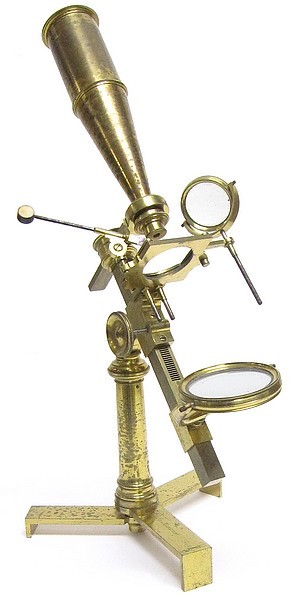
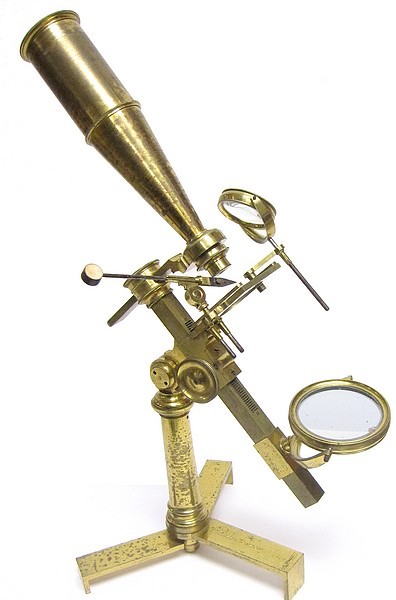
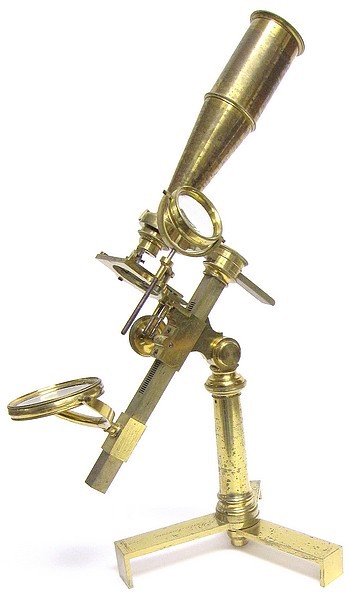
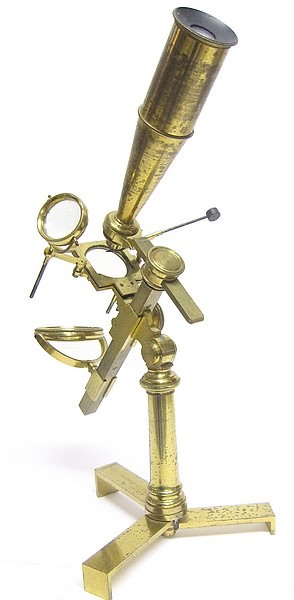
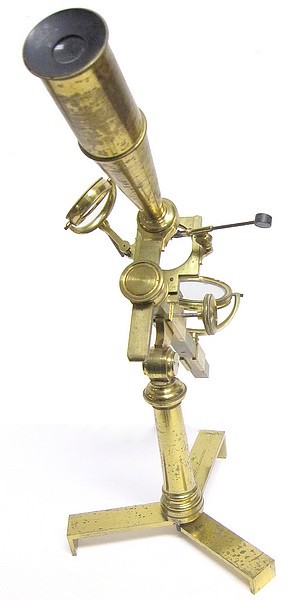
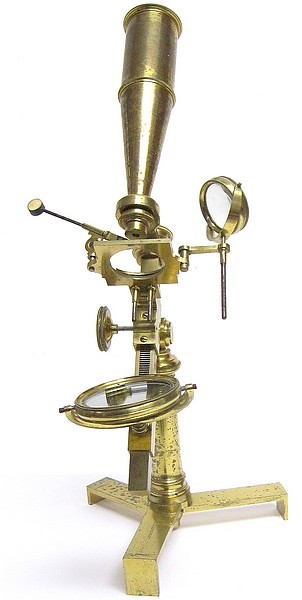
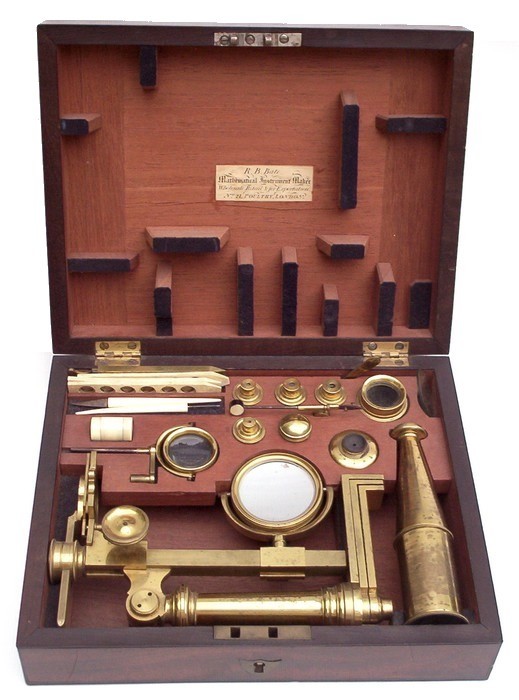
This instrument is based on the Jones Most Improved model. It is a smaller version of this design. The microscope is stored disassembled in a mahogany case. It is equipped with a complete set of accessories among which are four objectives, another objective with a Lieberkuhn reflector for use with opaque objects, a high power objective made for use without the compound tube, a live box, a brass wet slide, a stage forceps, a stage condenser on an articulated arm, a set of dissecting tools, a number if ivory sliders, an ivory talc box, and a glass stage insert. Typical of microscopes from this period, the internal optics consist of a double eye lens and a field lens in the middle of the tube.
The "Most Improved"
model microscope has its origin in the "Universal
Compound Microscope" introduced by George Adams Jr.
in the late 18th century and described in his 1787
publication, Essays on the Microscope. By the end of
the century, the copyright to Adams' books and
designs were purchased by the firm W. & S. Jones
of London. They began, in 1798, the production of a
microscope with a similar design, which they called
the "Jones
Most Improved Microscope". A folding tripod base
from which rises a pillar terminating in a compass
joint for inclination characterizes this design.
Attached to the other end of the joint is a bar
that holds the tube, stage, mirror, and sometimes a
simple lens to serve as a condenser. The focusing
mechanism consists of a rack embedded in the bar and
pinion attached to the stage; this arrangement moves
the stage in and out of focus. The mirror can also be
positioned on the bar by sliding it up and down. The
optics in this model usually consist of a double
eye-lens and a field lens located within the body of
the tube; the objectives are non-achromatic. This
design became very popular and was produced by many
other English opticians during the first part of the
19th century.
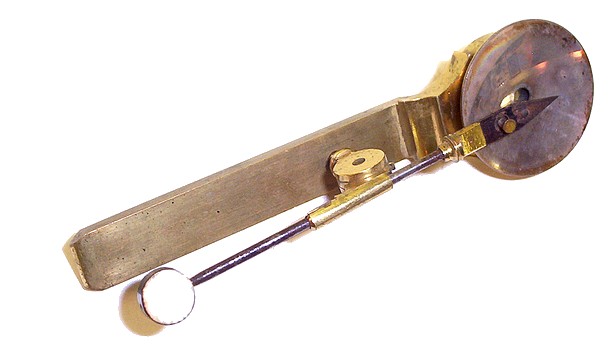
The limb can be dismounted and in conjunction with the Lieberkuhn objective and stage forceps, the instrument can be configured as a hand-held compass microscope.
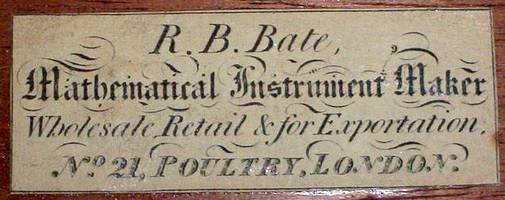
Elsewhere on this website are examples of a large Jones Most Improved and a Jones Improved microscope by Bate.
A discussion of the life and work of Robert Brettell Bate (1782-1847) is online